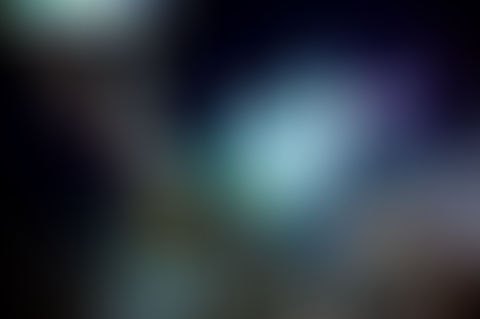
Mysteries of the Twilight Zone
Winner - Best Overall Film

Natural World Facts
Engaging Platforms - Finalist
About NWF
I'm Leo Richards, and Natural World Facts is my life's work and passion project; it's my vessel for wildlife film-making, science communication, writing, and beyond, and I'm keen for it to be as collaborative as possible!
On YouTube, my films have been viewed more than 117 million times and amassed 950,000 subscribers. In 2022, NWF was a finalist in the Engaging Platforms category of the Jackson Wild Media Awards; in 2023, my film Robots in the Deep was shortlisted as official selection in the International Ocean Film Festival.
Please get in touch if you would like to work with me on any nature-related film or project. Click below to view a portfolio of some of my previous collaborations.
WHO I WORK WITH:
Let's chat!
If you're a fan or potential collaborator, I would love to hear from you! I'm open to discussing anything, and will endeavour to reply to all messages. But here are my particular interests.
-
Science Communication Projects
-
Wildlife Film Production
-
Deep-sea Content and Exploration
-
Presenting and Narration

Rhinopias, Coral Triangle
Shot by Edi Frommenwiler for Underwater Paradise.

About Leo
Leo Richards is the founder and presenter of Natural World Facts. He is 22 years old.
A bit of background...
I’m an award-winning wildlife filmmaker, science communicator, and founder of Natural World Facts — a platform I began at age nine, now reaching over 950,000 subscribers and 110 million views on YouTube. My short documentaries, especially the Deep Sea Wonders series, have won international recognition, including Grand Prize at the Water Sea Oceans Film Festival and Overall Winner at Wild Earth Oceania, and have premiered at venues like the Royal Institution in London. I founded Natural World Facts in 2012, when I was nine years old and already hopelessly in love with the natural world. What began as a home-grown passion project — filming wildlife facts in our back garden — has grown into an award-winning online documentary platform, viewed by over 100 million people across the globe. But really, it all started with woodlice. At the age of two, I was already digging through the garden soil in search of beetles, worms, and anything small that wriggled. I’d collect them in jam jars and matchboxes, sorting and observing them with the curiosity of a future biologist. But the woodlice — little crustaceans in a world of insects — captured my attention like nothing else. As crustaceans, they didn’t belong, and that made them fascinating. That same fascination deepened the day I watched Sir David Attenborough’s Life — a free DVD that came with my mum’s newspaper. The ocean migrations, the penguins and leopard seals, the coral reefs — it cracked the world wide open. I knew then what I wanted to do: not just explore and protect these distant wild things, but speak for them. To bring their stories to others. With the help of my brother, I started a blog in 2010, posting daily animal facts. A year later, I stepped in front of the camera. We rebranded as Natural World Facts, built a website, and in August 2012 uploaded our first video. At first, my brother filmed and edited while I wrote and presented. When he left for university, I took on every role myself — scriptwriting, editing, voiceover, publishing — and never looked back. What began as a quiet trickle of views became a global tide. In 2021, after a long absence, I uploaded a new film about a creature that had haunted me since I first saw it on River Monsters — the Greenland shark. That one video reignited everything. It also sparked my lifelong passion for the deep sea. Since then, I’ve created more than 100 short films and documentaries, many forming the Deep Sea Wonders series — exploring hydrothermal vents, brine pools, hadal trenches, and deepwater coral gardens. The series now forms the core of Natural World Facts, and inspired me to design an interactive Deep Sea Hub: a vertical digital journey through the ocean’s zones, populated with facts, species, and short films. In late 2021, I began studying Marine Biology at the University of Southampton. Through that, I connected with deep-sea scientists, ocean exploration organisations, and fellow communicators who shared my mission: to reveal the ocean’s mysteries and communicate its value through storytelling. Since then, I’ve worked as a writer, director, narrator, and editor on award-winning documentaries, including collaborations with Schmidt Ocean Institute, the Deep Ocean Stewardship Initiative, and the Regional Cabled Array. My films have premiered at venues like the Royal Institution in London and received top honours at festivals including Water Sea Oceans and Wild Earth Oceania. Today, Natural World Facts continues as a fusion of science, storytelling, and cinematic filmmaking — driven by a simple belief: the natural world is worth knowing, and stories can protect it.
WHAT I DO:
Narration & Presenting
Working on a documentary film, podcast, or other project that requires voice-over talent? Get in touch and let me know - I'd love to get involved!
Along with narrating my own NWF films, I have narrated several other online documentary series, as well as Brazen FM's podcast Wonder, a 'stop and breathe' show covering natural history topics and natural phenomena! Follow links to projects I've been involved in, or sample excerpts from some of my work below. Projects are unfinished, links coming soon.
Voice samples:
My projects:
Client work:
































